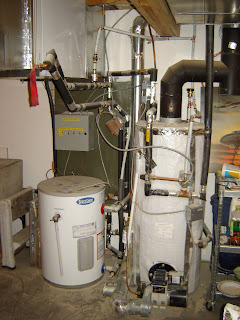 Figure 1. Monthly energy costs savings for adding electric pre-heat to oil-fired combo heating system.
Figure 1. Monthly energy costs savings for adding electric pre-heat to oil-fired combo heating system.We have an Green Home which means it is a energy efficient home (Energuide Rating of 81, equivalent to R-2000) - or in other words, our house should use half the energy of a normal home. Our home is heated with a combo-system: it's a oil-fired hotwater tank that provides both domestic hot water and space heating. The "fuel switch" was achieved by installing an electric hotwater tank in front of the oil-fired hotwater tank - that way the electric "pre-heats" the water entering the oil-fired tank. Both tanks are set at 140 DegF (I tried putting the oil-fired tank lower than the electric, but the relatively colder water from the oil-fired hot water tank was causing my fancoil (which provides the forced air space heating) to run in low-speed due to low inlet water temperature).
 Figure 2. Electric Pre-heat for combo-heating system. Electric hot water tank on left (half-height space saver so it fits under the fancoil unit) pre-heats water entering / returning to oil-fired hot water tank on right. Yes, I know it's a pretty messy install - but it works.
Figure 2. Electric Pre-heat for combo-heating system. Electric hot water tank on left (half-height space saver so it fits under the fancoil unit) pre-heats water entering / returning to oil-fired hot water tank on right. Yes, I know it's a pretty messy install - but it works. I installed the hotwater tank in December 2007 due to both rising oil costs, but also in consideration of the benefits of using our locally produced hydroelectricity: very low GHG emissions and investing locally (e.g. energy expenditures flow to Yukon owned energy corporation). The hotwater tank cost about $250, and then I spent about another $200+ on fittings, copper, valves, breaker, wire, etc. So, the conversion probably cost me $450 plus a bunch of my labour (I'm not a very fast plumber).
Building Energy Use
During the design of our house, we had an energy model run (using HOT2000). Figure 3 below shows the modelled energy consumption of our house, and the acutal energy usage before and after the fuel switch to electricity
We are using a wood stove for much of our space heat, and the HOT2000 model did not originally consider that. Overall we see that our house is using about 12% more energy than originally modelled, even when you take into consideration the relatively lower combustion efficiency of the wood stove.
The fuel switch to electricity did not substantively reduce our total energy usage (only about 1% annual energy consumption savings), however in 2008 it has saved about $260. The simple payback on the electric pre-heat system should be about two years: not a bad investment given today's investment opportunities!
However, looking at Figure 1 you can see that the differential between oil and the electricty has decreased in recent months, reducing our savings. Oil prices have dropped and net electricity prices have risen due to YEC and YECL rate riders.
Green House Gas Emissions
Reductions in green house gas emissions are substantive. Figure 4 shows GHG emissions for our house. Note that biomass related GHGs have to be reported under most GHG protocols, but as biomass (e.g. burning wood) is considered renewable and carbon-neutral, it does not count towards your total emissions.

Figure 4. Green house gas emissions for 705 Jarvis Street.
The Yukon's electricity is generated primarily by hydro-electric generation, and hence the Yukon's emission factor for electricity is currently very low (on the order of 1.6 g/kWh of CO2e). Given our use of biomass (aka wood) for heating our house, our baseline (pre-fuel switch) GHG emissions were already 16% lower than modelled, even though we are using 12 % more energy than modelled. With the fuel-switch to electricity, we've reduce our home related GHG emissions another 70% - from 5 tonnes of CO2e per year to 1.6 tonnes of CO2e/yr.




No comments:
Post a Comment